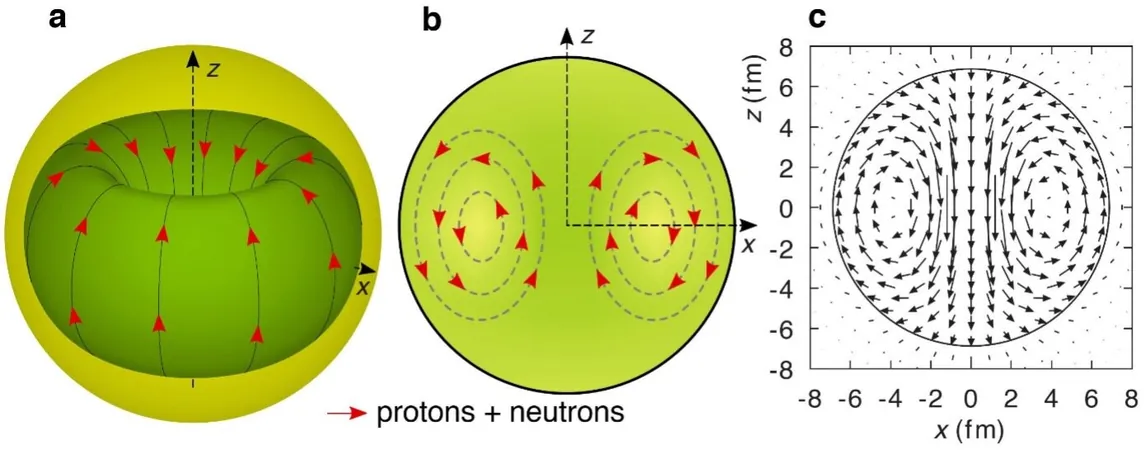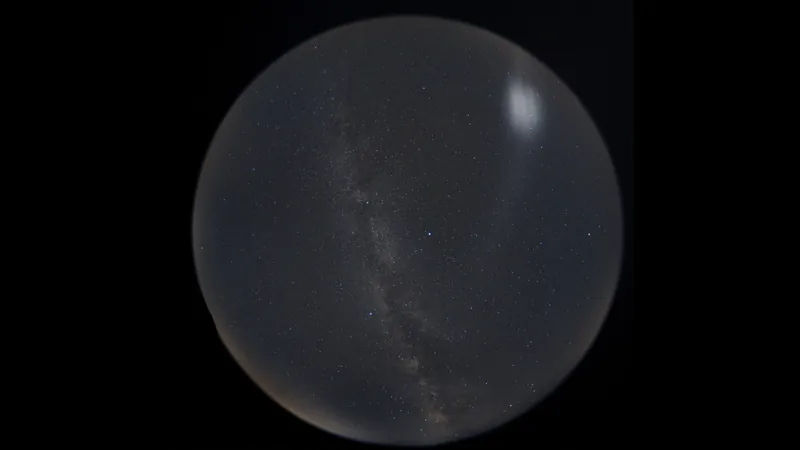
Breakthrough in Nuclear Physics: Could Nickel-58 Reveal the Secrets of Toroidal Dipole Excitations?
2025-01-07
Author: John Tan
Groundbreaking Discovery in Nuclear Physics
In an exciting development poised to transform our understanding of nuclear physics, researchers have identified potential candidates for elusive toroidal dipole excitations within the Nickel-58 nucleus. This groundbreaking discovery, recorded in a recent paper published in Physical Review Letters, challenges traditional models and opens the door to new experimental observations in heavy nuclei.
Understanding Dipole Toroidal Modes
Dipole toroidal modes are fascinating phenomena characterized by a toroidal distribution of currents that create vortex-like structures. These can be visualized through familiar examples such as smoke rings—circular rings of smoke formed when air is exhaled through a small opening. Physics theories have long suggested that these same ring-like structures may exist within atomic nuclei, yet evidence has been difficult to establish until now.
Collaborative Research Effort
The collaborative research effort spearheaded by scientists at Technische Universität Darmstadt, along with the Joint Institute for Nuclear Research and other esteemed institutions, highlights an important milestone in nuclear research. Peter von Neumann-Cosel and Valentin O. Nesterenko, co-authors of the study, explain, "Toroidal flow manifests across various domains, including solid-state physics and heavy-ion collisions, and understanding these flows can illuminate a wealth of natural phenomena."
Challenges in Detecting Toroidal Modes
Traditionally, detecting toroidal modes in atomic nuclei has proven elusive, primarily due to experimental limitations. However, recent advances, including high-precision photon, electron, and proton scattering techniques, are equipping researchers with the tools needed to explore these complex excitations. Remarkably, some dipole states previously believed to be magnetic dipole (M1) in nature have been found to exhibit electric dipole (E1) characteristics that closely resemble toroidal behavior, prompting further investigation into their unique properties.
Findings from the Experiments
In the study, the team conducted a series of scattering experiments involving photons, electrons, and protons directed at Nickel-58. Their findings revealed distinct signatures indicative of potential toroidal modes, particularly evident in backward scattering angles relative to the beam—a significant insight that might redefine nuclear structure comprehension.
Implications for Astrophysics
Notably, the research emphasizes the importance of understanding a profound behavior in heavy nuclei: these are often characterized by a higher number of neutrons compared to protons, leading to unique electric dipole strength patterns at low energy levels. Von Neumann-Cosel and Nesterenko assert that uncovering the true nature of this resonance could drastically impact astrophysical models concerned with the nucleosynthesis of heavy elements.
Future Experiments and Research Plans
Looking forward, the research team is already planning an ambitious new experiment slated for 2025 at the S-DALINAC electron accelerator at the Institute of Nuclear Physics, Technical University Darmstadt. This study aims not only to verify their claims regarding toroidal electric dipole excitations but also to analyze gamma decays to the ground state, thus enhancing the experimental basis for their theoretical predictions.
Conclusion: Bridging Physics and Astrophysics
As scientists delve deeper into the world of nuclear excitations, the potential implications of this discovery extend beyond mere academic interest. Understanding toroidal dipoles could revolutionize the way we interpret nuclear reactions and the formation of elements in the universe, bridging gaps between fundamental physics and astrophysical observations.
Stay tuned for further developments as researchers embark on this groundbreaking journey into the heart of atomic nuclei!





 Brasil (PT)
Brasil (PT)
 Canada (EN)
Canada (EN)
 Chile (ES)
Chile (ES)
 Česko (CS)
Česko (CS)
 대한민국 (KO)
대한민국 (KO)
 España (ES)
España (ES)
 France (FR)
France (FR)
 Hong Kong (EN)
Hong Kong (EN)
 Italia (IT)
Italia (IT)
 日本 (JA)
日本 (JA)
 Magyarország (HU)
Magyarország (HU)
 Norge (NO)
Norge (NO)
 Polska (PL)
Polska (PL)
 Schweiz (DE)
Schweiz (DE)
 Singapore (EN)
Singapore (EN)
 Sverige (SV)
Sverige (SV)
 Suomi (FI)
Suomi (FI)
 Türkiye (TR)
Türkiye (TR)
 الإمارات العربية المتحدة (AR)
الإمارات العربية المتحدة (AR)